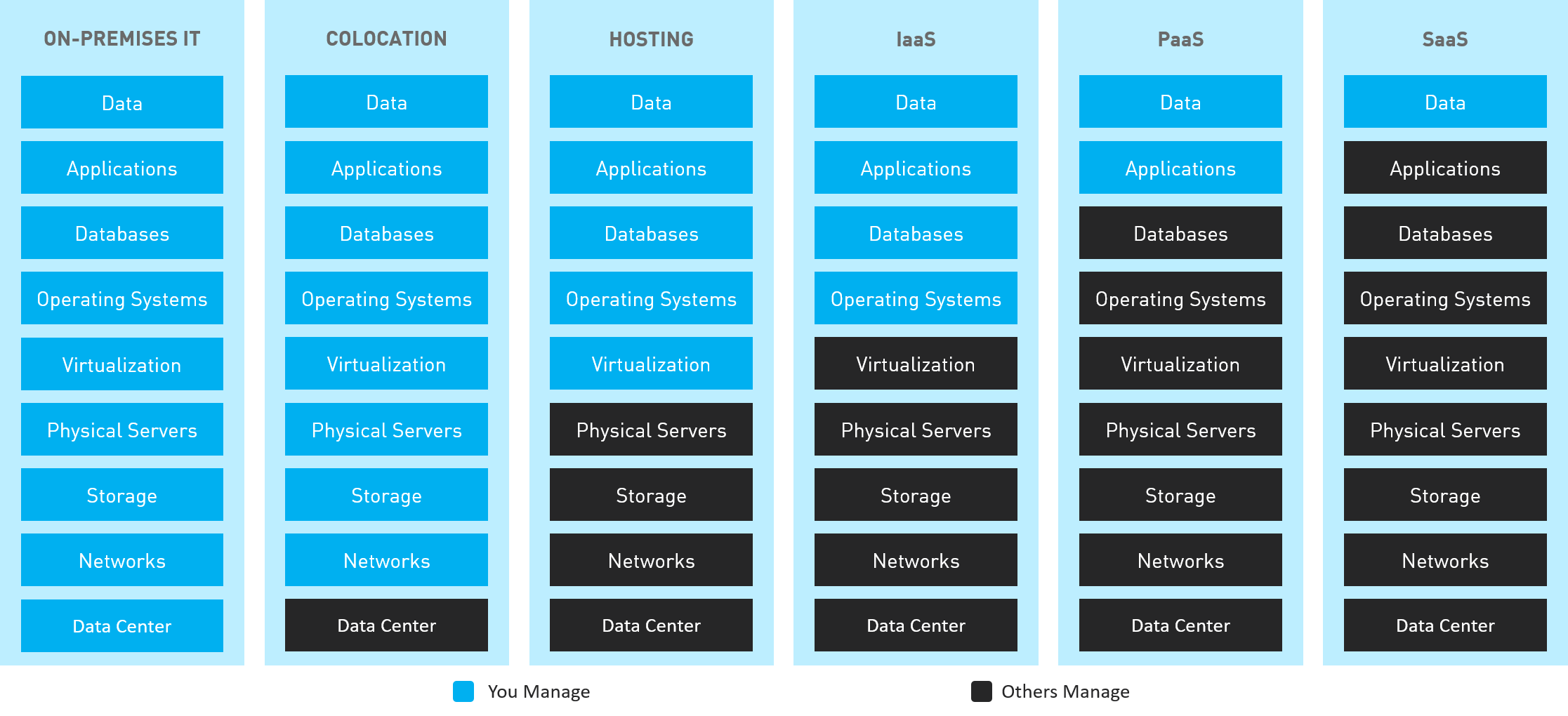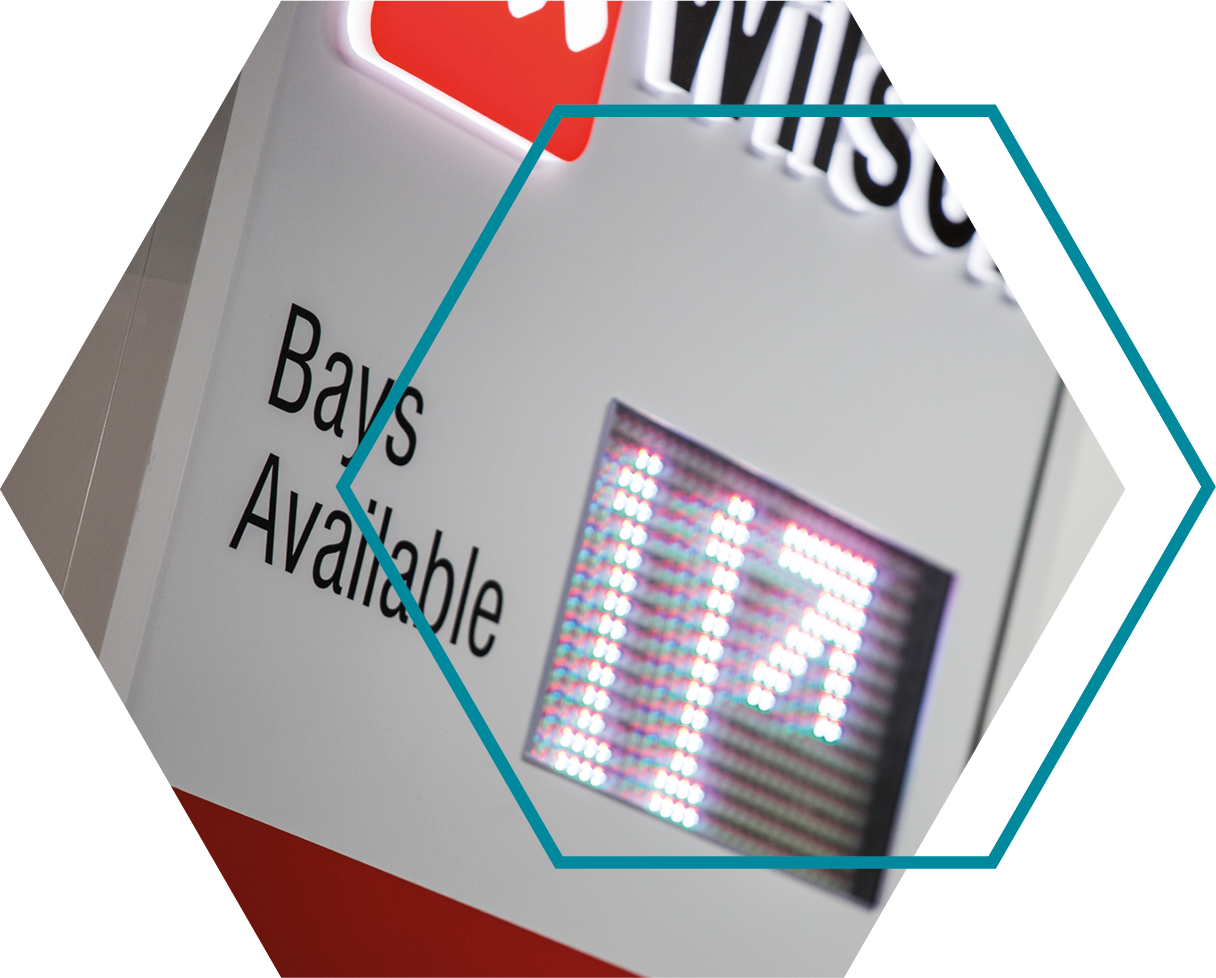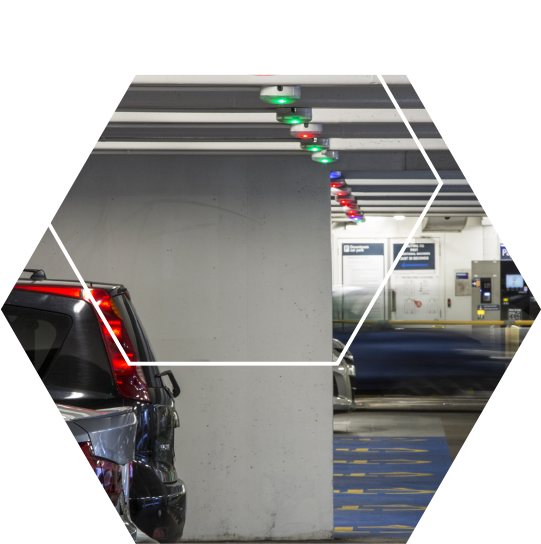Slider Home
-
in Slider Home
-
21. 12. 21
- posted by: Super User
-
Hits: 1677
On-Premises Data Center
Historically, all organizations used on-premises data centers. An on-prem data center simply means that the organization maintains all of the IT infrastructure needed by the business on-site.
An on-prem data center includes everything from the servers that support web and email to the networking hardware connecting them to support infrastructure equipment like uninterruptible power supplies (UPS). Depending on the organization, this can range from a server closet to a massive, dedicated private data center like those operated by large tech corporations.
Cloud Data Center
Over time, organizations have increasingly moved away from the on-premises data center. Instead, they have adopted cloud data centers.
A cloud data center moves a traditional on-prem data center off-site. Instead of personally managing their own infrastructure, an organization leases infrastructure managed by a third-party partner and accesses data center resources over the Internet. Under this model, the cloud service provider is responsible for maintenance, updates, and meeting service level agreements (SLAs) for the parts of the infrastructure stack under their direct control.
Shared Responsibility Model
The migration from an on-premises data center to a cloud data center doesn’t mean moving everything to the cloud. Many companies have hybrid cloud data centers which have a mix of on-premises data center components and virtual data centers components. In the figure below we see how as-a-service models are shifting ownership of data center and infrastructure components from a fully owned and operated on-premises facility towards a commodity service model.

-
in Slider Home
-
21. 11. 21
- posted by: Super User
-
Hits: 1574
With the rapid development of the global economy and the consistently improving living standard, there has been a growing number of vehicles. for efficient vehicle management, there has been an increasing number of parking lots and vehicle management areas beginning to use License Plate Recognition (LPR) products and Ultra-high Frequency (UHF) products. The automatic license plate identification enables fast vehicle access to parking, which provides convenient user experience.

Automatic Vehicle Recognition (With UHF Reader and UHF Tag)
Its operation starts when a user with the passive tag drive through the UHF reader located at the entrance of the parking lot. The UHF reader will recognize the tag. The carpark barrier will lift up for access upon valid recognition. If not, access will be denied.

Automatic Number Plates Verification (With LPR Camera)
LPR technology is an application of computer video image recognition technology in license plate identification area. Its operation starts when the vehicle is located at the entrance of the parking lot, the LPR Camera will scan on the license plate character, and its recognition technology will identify the license plate number, color and other information. If the number on the license plate is valid, the car park barrier will lift for access, otherwise, no access will be allowed.

Dual Number Plate Authentication
(UHF and LPR Based Two Level Authentication System for Vehicles)
Dual number plate authentication is a Multi-factor authentication to use of several authentication techniques together. Once the vehicle is located at the entrance of the carpark lot, both of the UHF reader and LPR Camera will start to recognise the UHF Tag and the number plate on the vehicle. If the verification of the number plate and the UHF tag is valid, the car park barrier will lift for access, otherwise no access will be allowed.

Blacklist and Whitelist Management
Car Park System management Software includes Role and Black and White Lists.
If the cars are pre-set on the white list, including _re trucks, police cars, and privileged cars, can enter and exit the parking lot free of charge. Otherwise, cars on the black list are not allowed to enter or exit the parking lot.

UHF Tag
There are two kinds of UHF tags in this long distance fixed vehicle access management application.


UHF Reader
The UHF RFID reader is an RFID long-range proximity card reader which can simultaneously read multiple passive UHF tags at ranges up to 12m. The reader is waterproof and is suitable for use in a wide range of RFID applications, such as transport management, vehicle management, car parking, production process control, and access control.

License Plate Recognition (LPR) Camera
LPR technology is an application of computer video image recognition technology in license plate identification area. This technology through the license plate crawling, image pre-processing, feature extraction, license plate character recognition technology to identify the license plate number, color and other information.

-
in Slider Home
-
21. 11. 18
- posted by: Super User
-
Hits: 1824
A parking system shows the parking spaces availability in a car park or controlled parking areas. It presents drivers with dynamic information about the occupancy of lots, its amounts and locations within the venue, and enables the drivers to reduce unnecessary driving and circling in the parking.
Hence, a strong parking solution presents three main benefits: reducing vehicle congestion and time for finding a free parking spot, reducing emissions of cars due to better navigation, offering a full monitoring of all parking spaces.
Our parking management system provides the operators with an optimization of the revenue of their car park and the drivers with a user-friendly payment experience.

Digital Guidance Signage
We offer a very complete Digital Guidance Signage based on variable message signs displaying real-time space availability and direction to available bays:
- Working in conjunction with our sensors, real-time occupancy status is wirelessly transmitted to Variable Message Signage, at every driver decision point indicating how many spaces are available, and where.
- The variable message signs are designed and manufactured to the customer requirements:
- : can be mounted either to the ground or to a wall and are typically used at the entrances to multi-level car parks, or at the end of aisles in outdoor car parks.
- Overhead LED signs: can be for internal way finding in multi-level car parks and are mounted on the ceiling.
- A mains power connection is required for each sign.
- To maximize efficiency and improve traffic flow, signage is strategically placed strategically placed down every aisle and at key decision points, delivering the right information at the right time.

We offer a fully-integrated Overhead Parking guidance for car parks operation
Car detection
Presence of a vehicle within each parking bay is detected by sensors.
Availability lights
Each sensor is linked to an overhead indicator, which lights green or red indicating live parking availability to motorists.
Configurable lights
LED lights are fully configurable and can be adapted to suit the customer requirements.
Easy navigation
Drivers are easily able to identify and find available bays saving them time and frustration as well as vehicle emissions.
Higher visibility of underused bays
Underused bays are also much more visible increasing overall occupancy of the car park.
Wireless solution
Fully wireless solution, power is all that is required to operate the system.
Security and peace-of-mind
Each unit contains a separate maintenance cabinet and collection vault.
Simple and low cost
Simple and low cost to install, guidance lights can be installed using either existing light fixtures, fixed to a power rail, or hung from conduit.
Additional Guidance Options
Modularity and possibility to offer car counting solutions, fixed and mobile automatic number plate recognition solutions.
-
in Slider Home
-
21. 11. 21
- posted by: Super User
-
Hits: 2253

The Lighting Division of MESC is a “one stop” resource for all of your lighting projects. From large complex lighting systems through to small commercial lighting contracts MESE offers a holistic service covering lighting supply and after sales services to meet the requirements of any new construction or refurbishment project.
We supply a full range of lighting products from leading manufacturers. we focus on the supply of high quality light fixture for interior, exterior and façade application.
MESC has expertise to provide the complete lighting solution for all kind of residential, commercial and industrial projects.
The products meet best of European standards and are meant to withstand GCC weather conditions. Being performance oriented, they are well suited for upscale projects requiring premium LED commercial lighting fixtures.
LIGHTING SPECIALS
Complete Lighting Services Ltd are proud to offer a unique bespoke lighting consultation.
Design and manufacturing process where we work alongside our customers to provide new custom-made lighting to meet your specific needs, replicate existing fittings where you need replacements to match lighting that is already in place or source something unique for you through our extensive network of lighting manufacturers and component suppliers.
SERVICES
Our customer base includes consultants, architects, contractors, County councils, contractors and end users.
Custom and bespoke fittings are our speciality. We pride ourselves in the service we offer, working in partnership with our customers, providing a breadth of understanding and a depth of expertise, offering solutions to any lighting challenge.
PROFESSIONAL LIGHTING
Discover the best global lighting designs and craftsmanship with our comprehensive range of technologically advanced professional lighting products. Our lighting solutions are designed keeping your space in mind, which is essential in creating aesthetically pleasing urban & professional environments.
Our range of professional lighting includes
- Architectural Facade Lighting
- Chandeliers
- Decorative Lighting
- Commercial Indoor Lighting
- Commercial Outdoor Lighting
CONSUMER LIGHTING
Reflect your story to the world and let your space shine at its best with the right lighting solutions from MESC. Choose from an array of options in varied sizes, shapes, and budgets to invariably uplift your indoor and outdoor spaces.
Our range of lighting includes
- Smart Lighting
- Down Lighting
- Spot Lighting
- Battens
- Lamps
- Strip Lighting
- Street Lighting
-
in Slider Home
-
21. 11. 14
- posted by: Super User
-
Hits: 1532
System Overview
- Fixed assets are assets that have a useful life of more than a year and are acquired for long term use. They are neither sold off after one year nor consumed by the organization like most short-term inventory.
- Fixed asset management is the process of tracking and maintaining an organization’s physical assets and equipment. Asset types include vehicles, computers, furniture and machinery
- Reliable documentation of fixed assets is necessary for forecasting and maintaining a company’s financial records. Fixed assets are often subject to wear and tear during usage and tend to deteriorate over time. Therefore, they need a rigorous depreciation management system.
- Businesses use fixed assets to run many operations. They normally classify them into the following categories for bookkeeping purposes.
Key Features
Using an asset management system, organizations can:
- Track and monitor fixed assets
- Oversee equipment and machinery in multiple locations
- Lower maintenance costs
- Improve operational efficiency
- Maintain a record of retired, sold, stolen or lost assets
System Features
- Web Application working on Internet/Intranet
- User friendly interface with responsive screens that fit in any screen size
- Using Microsoft SQL Server database
- Multiple-level security system
- Integrate with Barcode, RFID tags technologies
- Email notifications
Asset Management - Organizational Structure
- An organizational structure is defined as a system used to define a hierarchy within an organization. Our software will enable the organization to define it’s structure in a simple way. The system supports multiple-organization to be defined and multiple organizational structures.
- Organization units and positions are structural elements that define the organizational structure of the enterprise.
Types of Organization Units:
Types of Fixed Assets
- There are various types of fixed assets and can be tangible or intangible
- The system will group asset according to its type for reporting purposes
- You can define sub-type for each asset type
Types of Fixed Assets:
- Land
- Equipment
- Computer hardware/software
- Furniture
- Cell phones
- etc…
Asset Depreciation
- Depreciation is calculated annually over the useful life of the asset as part of your end-of-year accounts
- The system automatically creates a schedule for depreciation based on depreciation method and other related inputs.
- Depreciation Method: Straight Line / Declining Balance
- Useful Life:The period during which an asset is expected to be available for use
- Salvage Value:The estimated selling value of any asset, after it has reached the end of service life
Fixed Assets Transactions
Purchasing Fixed Assets
- The fixed assets acquisition process is responsible for the proper recording purchase invoices
- Identification and tagging of assets will take place
- The system is capable to archive all types documents related to the fixed asset
Asset Assignment Transaction
- The fixed asset can be assign to the organization or department or employee
- The initial assignment of can be registered in the purchase transaction or by an assignment transaction
- Transaction ID
- Transaction Date
- Assign To (Selected from the Organization Chart)
Asset Transfer Transaction
- If fixed assets are routinely shifted between departments, there should be a procedure that ensures the related transfer records are updated
- The transfer transaction can be recorded between buildings, departments, or individuals
- All transactions saved and archived in the system and the system provided asset query screens to search for asset and its location
- Transaction ID
- Transaction Date
- Transfer From
- Transfer To
- Purpose of Transfer

